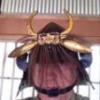-
Posts
14,079 -
Joined
-
Last visited
-
Days Won
260
Bugyotsuji last won the day on November 14
Bugyotsuji had the most liked content!

The recent visitors block is disabled and is not being shown to other users.

Bugyotsuji replied to Bugyotsuji's topic in Tanegashima / Teppo / Hinawajū

Bugyotsuji replied to Swords's topic in Auctions and Online Sales or Sellers

Bugyotsuji replied to Marc BROQUIN's topic in Wanted to Buy

Bugyotsuji replied to Bugyotsuji's topic in Tanegashima / Teppo / Hinawajū

Bugyotsuji replied to Bugyotsuji's topic in Tanegashima / Teppo / Hinawajū

